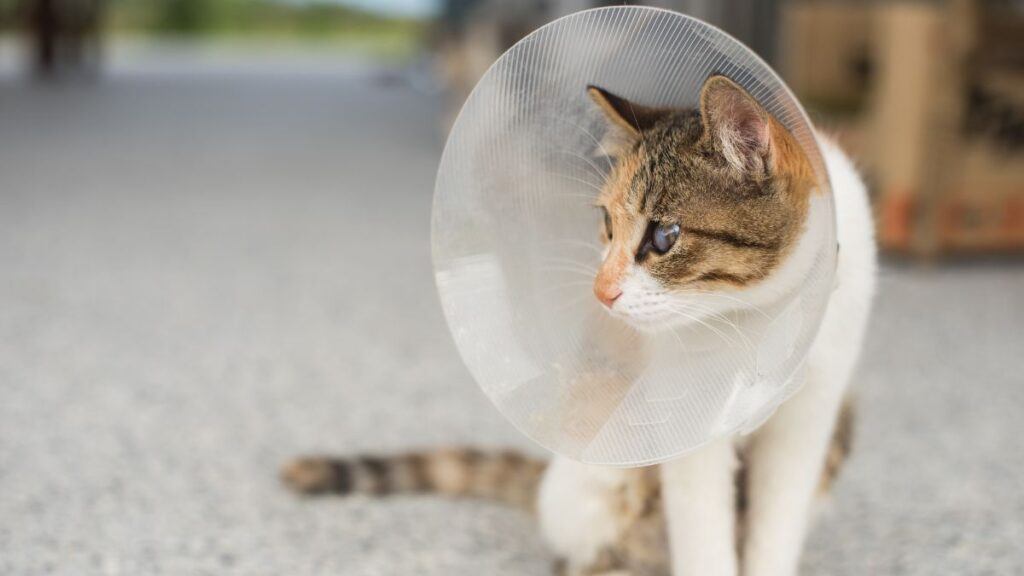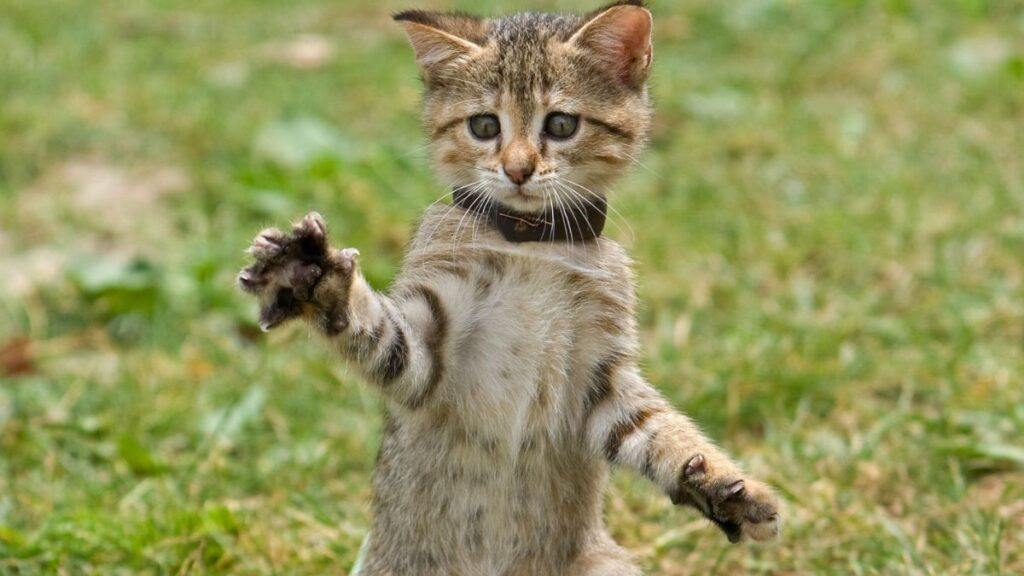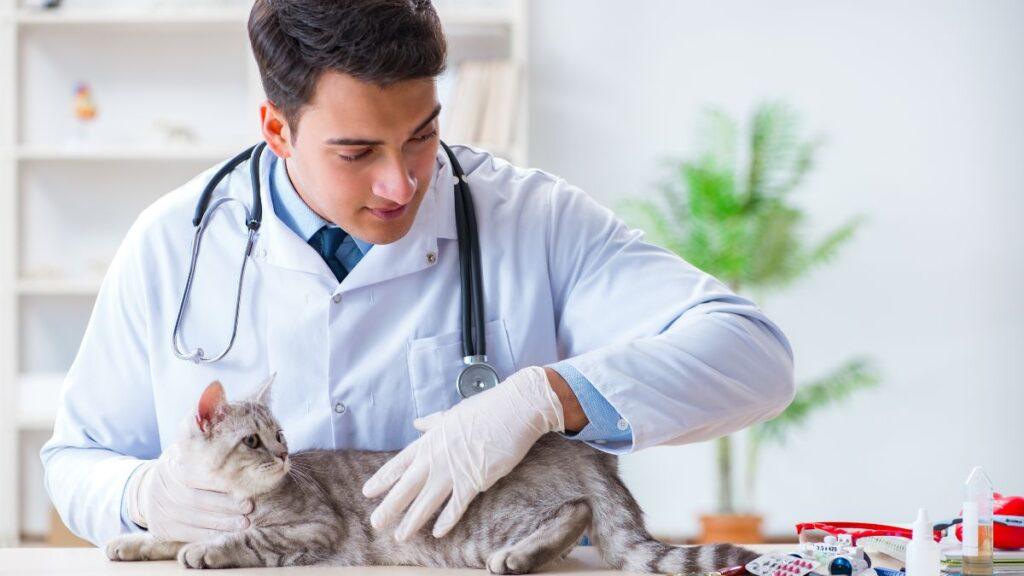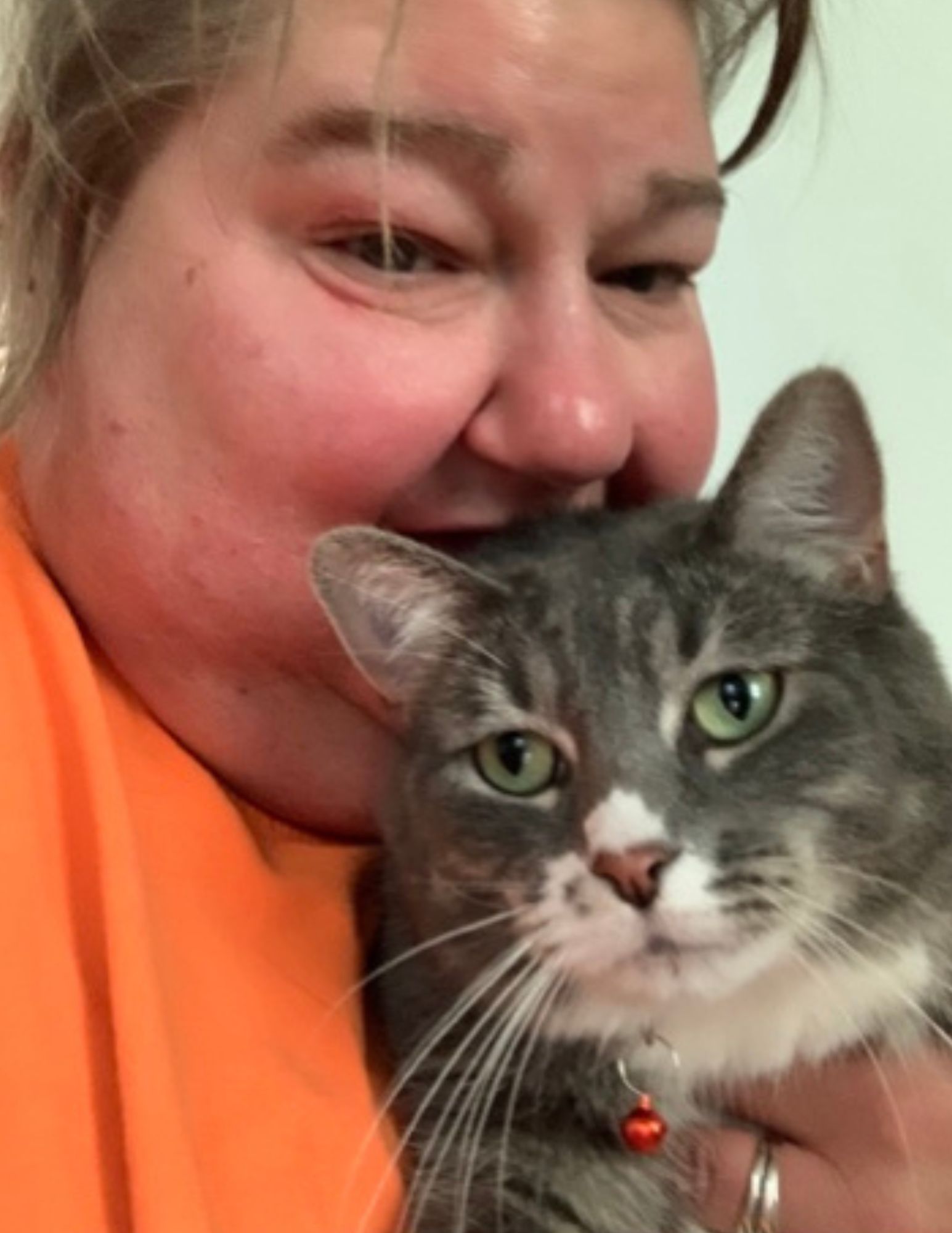Cats, much like humans, come in all shapes and sizes. From the petite teacup kitties to the grand and graceful Maine Coon, the range in cat sizes is genuinely astounding. So, what determines the size of your furry friend? Let’s delve into the world of feline size factors.
It has a lot to do with the breed of your furry friend. And if it is an outdoor or indoor cat. There is a lot that we can find out about why your cat is so small. Let us embark on this quest and determine why your cat is so small.
Why is my Cat so Small?
Understanding Cat Size Variations

Genetic Factors
Various factors influence a cat’s size, including genetic mutations and sexual dimorphism. For instance, some breeds, like Munchkin cats, have short legs due to genetic mutations resulting in a more diminutive stature.
Similarly, female cats tend to be smaller than their male counterparts, highlighting how a cat’s gender plays a role in their size.
Certain health conditions, such as pituitary dwarfism, can also impact a cat’s growth rate, causing them to remain small even in adulthood.
For pet owners concerned about their feline friend’s size, monitoring their health and providing proper nutrition for healthy weight gain is essential.
Regular check-ups and medical attention can help identify any underlying health issues affecting their growth.
Breed Diversities
Various domestic cat breeds display different sizes, shapes, and characteristics. Some smaller cat breeds, like the Devon Rex or the Cornish Rex, naturally have a smaller size compared to larger breeds like Maine Coon or the American Curl.
Awareness of a cat’s breed and the average cat size can help cat owners understand and predict their cat’s adult size.
Teacup cats and dwarf cats, for example, are bred specifically for their tiny size, while Siamese cats are known for their slender frame.
It’s important to remember that providing nutritious food and a proper environment for your cat can help them reach their full potential, regardless of their breed or genetic predispositions.
By exploring these factors affecting cat size, pet owners can better understand and support their feline companions throughout their growth and development.
They can ensure a healthy and happy life for their little cat by providing necessary care, proper nutrition, and regular visits to their vet for assessment and support.
Health Factors

Poor Nutrition
One of the main reasons why some small cats remain small and don’t reach their full potential is poor nutrition. Like kittens, adult cats require a balanced diet with essential nutrients, vitamins, and minerals to maintain a healthy weight and growth rate.
Many pet owners might fill their cat’s food bowl with low-quality kibble or wet food, which lacks the necessary nutrients to support proper growth and development.
Female cats, particularly those that have undergone frequent pregnancies, can experience a lack of proper nutrition.
Pet parents must provide nutritious food for their pregnant or nursing cat’s size and overall health. Older cats might also suffer from poor nutrition due to a loss of appetite or medical issues affecting their digestive system.
Health Conditions
Cat health problems can range from minor to severe, with some directly affecting a cat’s growth. Cats with certain health conditions might experience weight loss or stunted growth, resulting in a smaller size. One common health problem is worm infestation.
These internal parasites steal nutrients from the cat, preventing them from growing and maintaining a healthy body weight.
Kidney disease is another common health issue in cats that can affect growth. Symptoms may include excessive thirst, weight loss, and poor appetite.
Cat owners should be on the lookout for such signs and seek medical attention for their feline friends if needed. Regular check-ups are essential to caring for your cat to ensure they’re healthy and growing quickly.
Sometimes, a cat may have a medical condition called pituitary dwarfism. The malfunctioning of the pituitary gland causes this and may lead to stunted growth, making cats appear to be a small cat breed even in their adult years.
Identifying these issues and consulting a veterinarian to provide appropriate care and treatment is vital.
Considering these factors and providing the necessary care and attention, pet parents can support their cats in reaching their optimal size and maintaining their overall health.
Assessing Size and Growth

Calculating Ideal Size
To determine the ideal size of your cat, consider factors such as breed, gender, and genetics.
Different cat breeds come in various sizes, ranging from smaller breeds like Devon Rex and American Curl to larger breeds such as Maine Coon and Siamese cats. Female cats tend to be smaller than their male counterparts, with sexual dimorphism playing a role in the size of your feline friend.
A cat’s ideal body weight varies depending on the breed, but generally, healthy adult cats weigh between 5 and 20 pounds.
Larger cats, like the Maine Coon, may weigh up to 25 pounds. Consider using a body condition score chart to accurately assess your cat’s size. This tool helps cat owners determine if their pet is underweight, healthy, or overweight based on body shape and size.
Monitoring Growth Patterns
It’s essential to monitor your cat’s growth throughout its life, especially during kittenhood. During the first few months of age, kittens should experience constant growth spurts.
Stray cats or those with poor nutrition may experience stunted growth and remain more petite. Providing proper nutrition and a balanced diet rich in animal protein, fatty acids, and essential nutrients will help your kitten reach its full potential in size.
The growth rate may vary across different cat breeds. For example, smaller cat breeds like Cornish Rex and Munchkin cats tend to reach their full-grown size faster than larger breeds.
It is crucial to monitor your cat’s growth and development regularly by weighing it and observing changes in its body structure.
In some cases, small stature in cats can be attributed to genetic mutations, such as those found in dwarf cats and Munchkin cats with short legs.
Medical conditions, like pituitary dwarfism, kidney disease, or internal parasites like worm infestations, can also cause small size in cats. For these reasons, regular check-ups with a veterinarian are crucial for early detection of any health issues that may impact your cat’s size.
Ensuring your cat gets the proper nutrition and keeping an eye on its growth rate are critical to maintaining their overall health.
A well-cared-for cat with a suitable diet, exercise, and access to regular veterinary care will generally reach its full adult size and maintain a healthy weight throughout its adult years.
When to Seek Veterinarian Help

Sometimes, small cats may not be small due to their average growth rate but because of underlying health issues. Cat owners need to recognize the signs and know when to consult a veterinarian.
Symptoms of Health Issues
Some health problems affecting a cat’s size include poor nutrition, genetic mutations, and environmental factors.
If your little cat is experiencing symptoms such as weight loss, loss of appetite, excessive thirst, or changes in litter box habits, it’s a good idea to seek medical attention.
Older cats with small stature might face health conditions like kidney disease or internal parasites, impacting their overall body condition score.
Aside from the mentioned symptoms, keep an eye on your feline friend’s behavior. If they constantly find hiding places or avoid interaction, this might indicate a health issue that must be addressed.
Regular Check-ups
Regardless of size, all pet owners must schedule regular check-ups with their veterinarian. This helps ensure your cat maintains a healthy weight and can detect early signs of medical conditions that might affect their growth.
Monitoring your adult cats’ growth, especially teacup cats or other smaller breeds like the Devon Rex, is essential.
During these check-ups, your veterinarian can assess your cat’s growth, provide guidelines on proper nutrition, and discuss any concerns you may have about your cat’s small size.
By following the veterinarian’s advice and providing a balanced diet with the right proportion of animal protein and fatty acids, you can help your small cat reach its full potential.
In conclusion, being familiar with the symptoms of health issues and scheduling regular appointments with a veterinarian is vital to ensure the well-being of your small cat.
Impact on Quality of Life
Mobility
Small cats can have varying degrees of mobility depending on their breed and overall health. For example, American Curl and Devon Rex are small cat breeds known for their agility and playfulness.
On the other hand, cat breeds such as Munchkin cats with short legs might have limited mobility due to their genetic mutations. Despite their smaller size, these cats can still lead a fulfilling life, enjoying playtime and exploration.
Cat owners must provide their small feline friends with a safe and stimulating environment, including hiding places and toys, catering to their unique needs.
Life Span
Various factors, such as breed, health conditions, and proper nutrition, can influence the life span of smaller cats.
Generally, smaller breeds like Siamese cats and Cornish Rex can have a longer life span than larger cats like the Maine Coon, as long as they maintain a healthy weight and receive regular check-ups.
However, some smaller-sized cats may experience health problems, such as kidney disease and internal parasites, which can shorten their life expectancy if not detected and treated in time.
Pet parents must monitor their cat’s behavior and body condition score to detect any signs of health issues early on.
Providing a nutritious diet for your small cat is paramount to supporting its growth and ensuring it reaches its full potential.
For instance, supplying wet food rich in animal protein, fatty acids, and essential nutrients will help them maintain their ideal body weight and keep them healthy.
Moreover, it is vital to monitor food intake, as loss of appetite or excessive thirst may indicate an underlying health issue requiring medical attention.
Conclusion – Why is my Cat So Small?
Small cats can have varying impacts on their quality of life, largely depending on their breed, environment, and health.
By ensuring proper nutrition, regular veterinary check-ups, and a safe and stimulating living space, pet owners can help their small feline companions thrive, regardless of their size or breed.
If you have a furry friend, we would love to hear about him/her in the comment section below.

Meet Ann Haasnoot, the passionate founder of CatFurLife.com. A lifelong cat lover from Wisconsin, Ann combines her extensive feline behavior and care knowledge with her love for writing. On her website, she shares invaluable insights about cat breeds, care tips, and her experiences with her beloved furbaby, aiming to deepen the bond between cats and their human companions.

